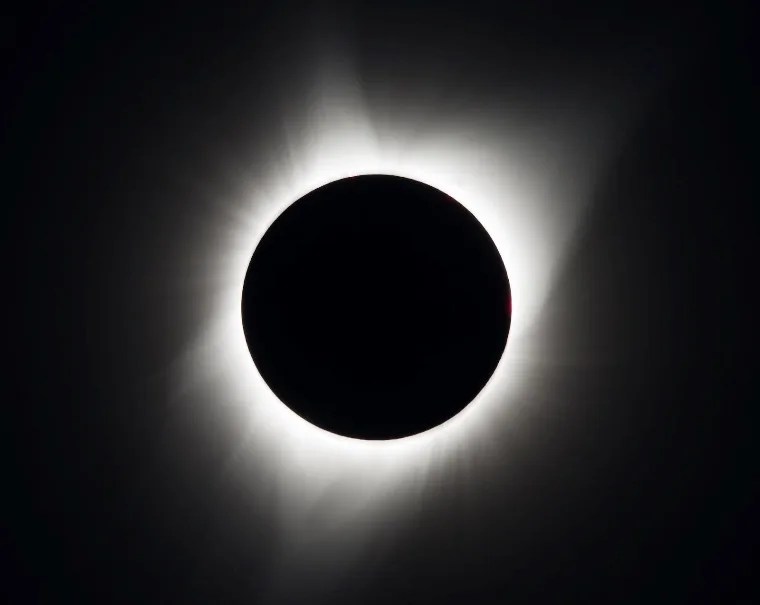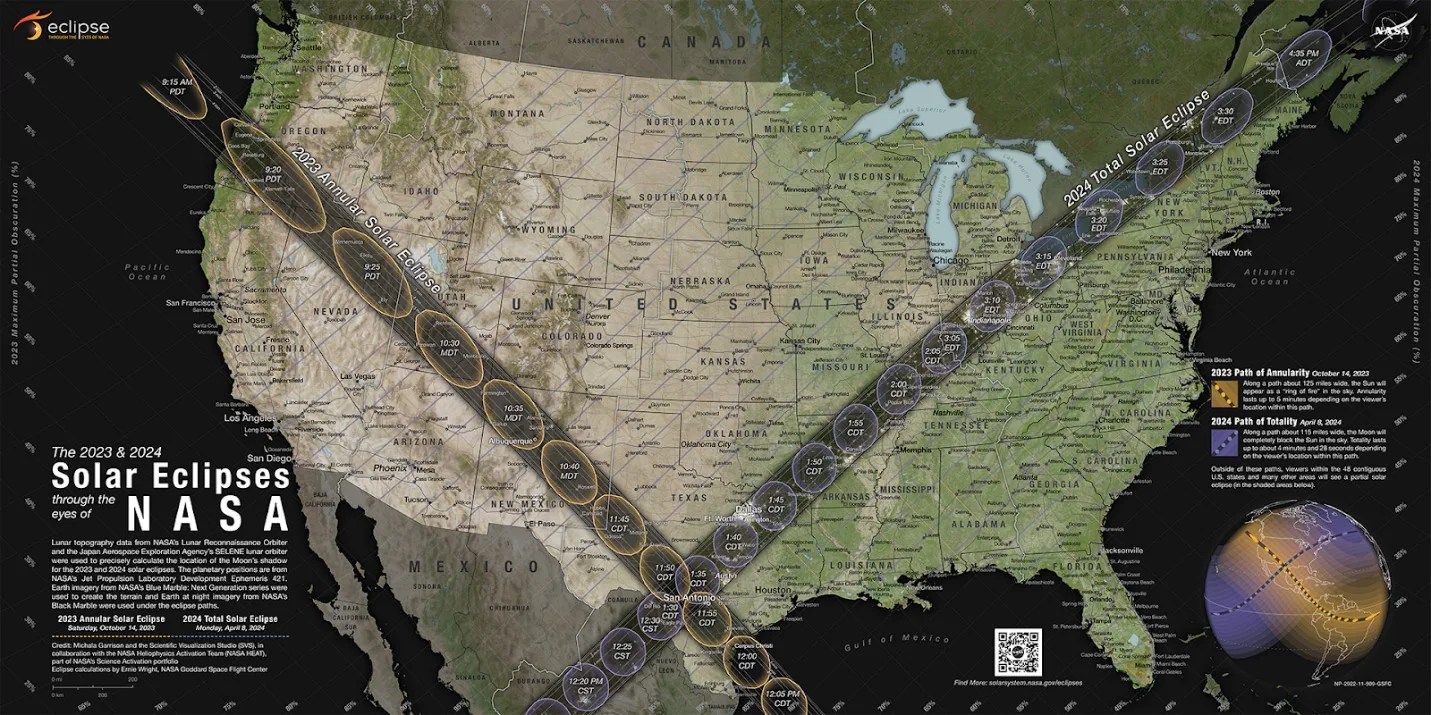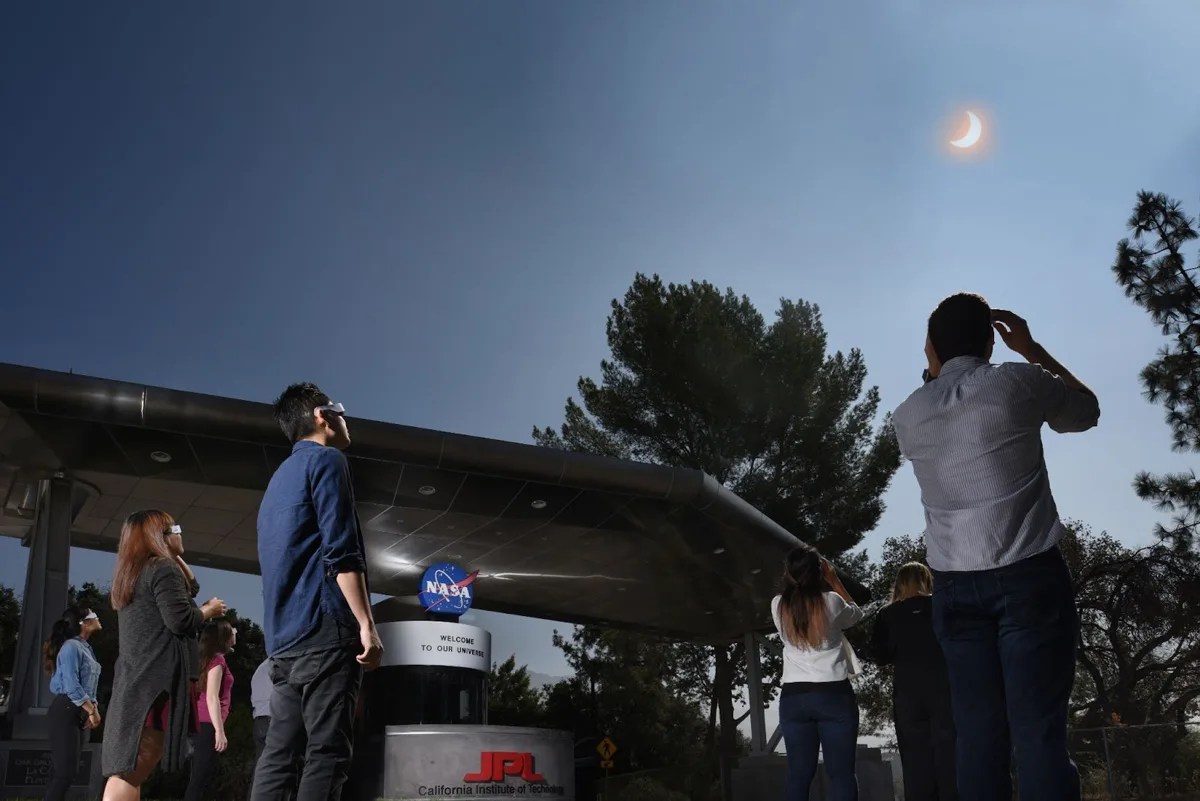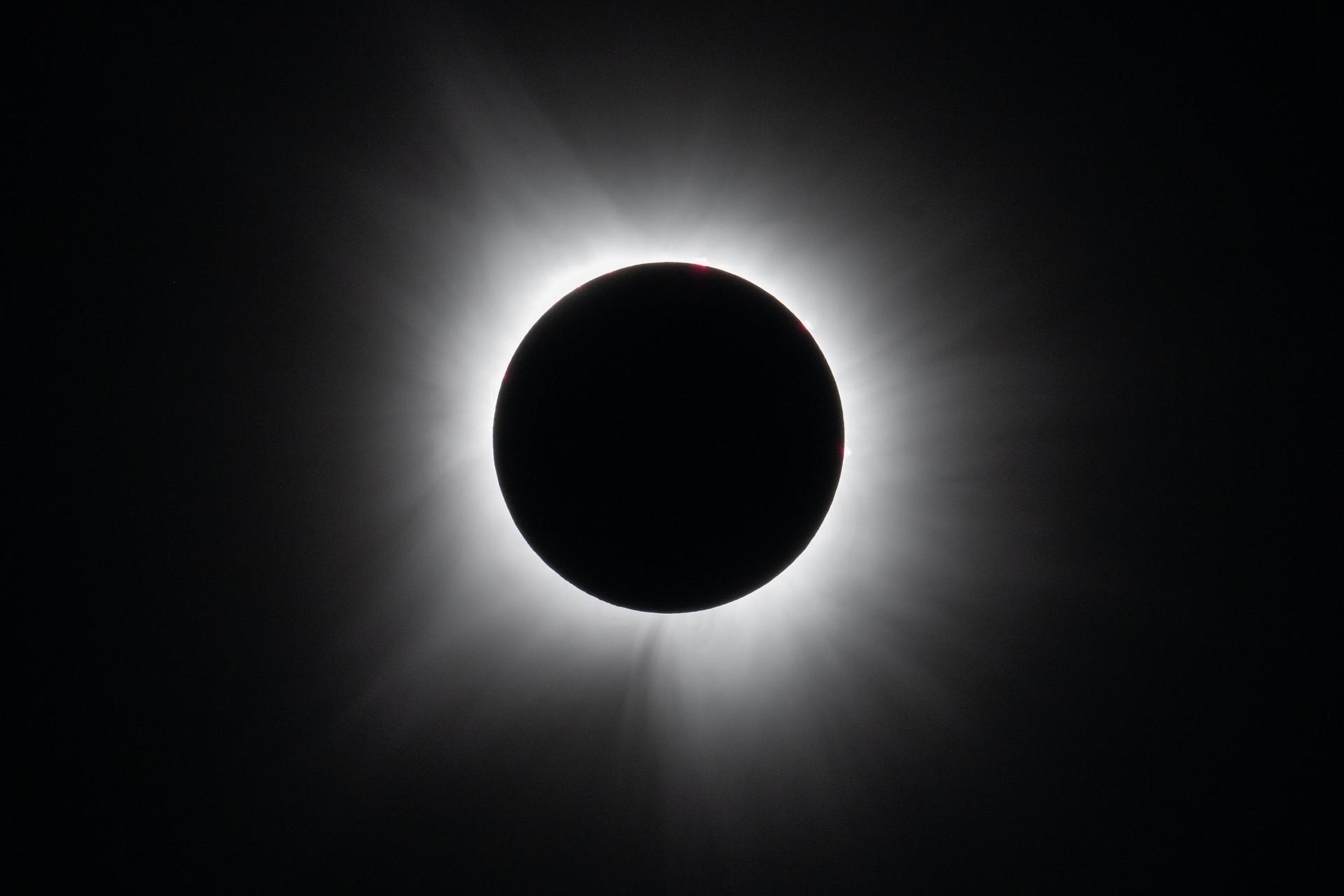3 min read
For a few minutes on April 8, 2024, millions of skywatchers across the United States will have the opportunity to see a total solar eclipse. It will be the last time a total solar eclipse crosses the U.S. for more than 20 years.
NASA has selected the following locations as its primary partner locations for the total solar eclipse: Kerrville, Texas; Indianapolis, Indiana; and Cleveland, Ohio. Each location will provide a group viewing area for the public. Additional locations could be added.
NASA’s live broadcast will include coverage from these locations. The broadcast will provide a front-row seat to the eclipse and will feature NASA experts across the country explaining the science behind the eclipse, how NASA studies it, and celebrating with the communities experiencing this event. NASA experts will be on-site at these locations to engage with the public and share the ways NASA studies the Sun and uses that information to understand its impact on Earth, throughout our solar system, and beyond.

A total solar eclipse happens when the Moon passes between the Sun and Earth. People viewing the eclipse from locations where the Moon completely covers the Sun – known as the path of totality – will experience the breathtaking sight of a total solar eclipse.
For this eclipse, the path of totality runs from Mexico, through the United States, and into Canada. Many viewers outside of the path of totality – including those in all 48 contiguous states, plus Hawaii and parts of Alaska – will see a partial eclipse, where the Moon covers a portion of the Sun.

Can’t wait for 2024? Another solar eclipse will be visible from the United States on Oct. 14, 2023. This eclipse – called an annular solar eclipse – happens when the Moon passes between the Sun and Earth, but when it is at or near its farthest point from Earth. Because the Moon is farther away from Earth, it appears smaller than the Sun and does not completely cover the Sun. As a result, the Moon appears as a dark disk on top of a larger, bright disk, creating what looks like a glowing ring around the Moon.
Appearing as a ring of fire, the annular solar eclipse will be visible in parts of the United States, Mexico, and many countries in South and Central America. A partial eclipse will also be visible from all 48 contiguous United States, plus parts of Alaska and Hawaii. NASA will broadcast the annular solar eclipse from Albuquerque, New Mexico, and Kerrville, Texas.

The way to safely view the 2023 annular eclipse and the 2024 total solar eclipse in the United States is different. Except during the brief total phase of a total solar eclipse, when the Moon completely blocks the Sun’s bright face, it is not safe to look directly at the Sun without specialized eye protection for solar viewing. During the annular eclipse this October, and when the Sun isn’t completely blocked by the Moon in April 2024, viewers must use specialized eye protection or use alternative viewing methods, such as a pinhole projector, the entire time.







